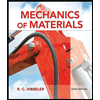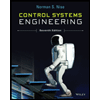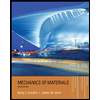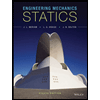The body of a racing car deflects the surrounding airflow so that the flow into an air inlet is at an angle 0. the inlet flow is diverted into two (dual) carburetors in a duct system. The parameter p= V3/V2 , where V2 and V3 are the air velocities into each carburetor, is defined. Other dimensions of the duct are given below. Assume the racing car drives at sea level with air density = 1.21 kg/m³. %3D
The body of a racing car deflects the surrounding airflow so that the flow into an air inlet is at an angle 0. the inlet flow is diverted into two (dual) carburetors in a duct system. The parameter p= V3/V2 , where V2 and V3 are the air velocities into each carburetor, is defined. Other dimensions of the duct are given below. Assume the racing car drives at sea level with air density = 1.21 kg/m³. %3D
Elements Of Electromagnetics
7th Edition
ISBN:9780190698614
Author:Sadiku, Matthew N. O.
Publisher:Sadiku, Matthew N. O.
ChapterMA: Math Assessment
Section: Chapter Questions
Problem 1.1MA
Related questions
Question
Fluid Dynamics question

Transcribed Image Text:The body of a racing car deflects the surrounding airflow so that the flow into
an air inlet is at an angle 0. the inlet flow is diverted into two (dual)
carburetors in a duct system. The parameter p= V3/V2 , where V2 and V3
are the air velocities into each carburetor, is defined. Other dimensions of
the duct are given below. Assume the racing car drives at sea level with
air density = 1.21 kg/m³.
%3D

Expert Solution
This question has been solved!
Explore an expertly crafted, step-by-step solution for a thorough understanding of key concepts.
This is a popular solution!
Trending now
This is a popular solution!
Step by step
Solved in 3 steps with 5 images

Knowledge Booster
Learn more about
Need a deep-dive on the concept behind this application? Look no further. Learn more about this topic, mechanical-engineering and related others by exploring similar questions and additional content below.Recommended textbooks for you

Elements Of Electromagnetics
Mechanical Engineering
ISBN:
9780190698614
Author:
Sadiku, Matthew N. O.
Publisher:
Oxford University Press

Mechanics of Materials (10th Edition)
Mechanical Engineering
ISBN:
9780134319650
Author:
Russell C. Hibbeler
Publisher:
PEARSON

Thermodynamics: An Engineering Approach
Mechanical Engineering
ISBN:
9781259822674
Author:
Yunus A. Cengel Dr., Michael A. Boles
Publisher:
McGraw-Hill Education

Elements Of Electromagnetics
Mechanical Engineering
ISBN:
9780190698614
Author:
Sadiku, Matthew N. O.
Publisher:
Oxford University Press

Mechanics of Materials (10th Edition)
Mechanical Engineering
ISBN:
9780134319650
Author:
Russell C. Hibbeler
Publisher:
PEARSON

Thermodynamics: An Engineering Approach
Mechanical Engineering
ISBN:
9781259822674
Author:
Yunus A. Cengel Dr., Michael A. Boles
Publisher:
McGraw-Hill Education

Control Systems Engineering
Mechanical Engineering
ISBN:
9781118170519
Author:
Norman S. Nise
Publisher:
WILEY

Mechanics of Materials (MindTap Course List)
Mechanical Engineering
ISBN:
9781337093347
Author:
Barry J. Goodno, James M. Gere
Publisher:
Cengage Learning

Engineering Mechanics: Statics
Mechanical Engineering
ISBN:
9781118807330
Author:
James L. Meriam, L. G. Kraige, J. N. Bolton
Publisher:
WILEY